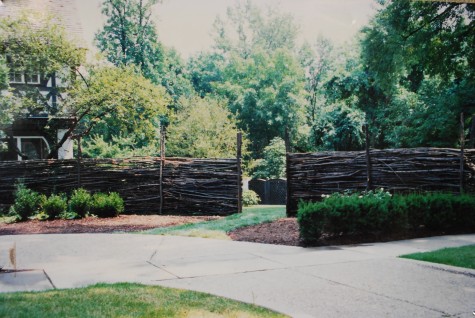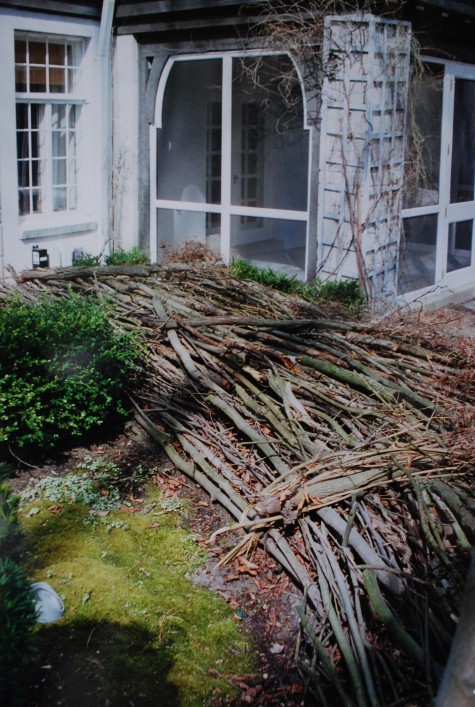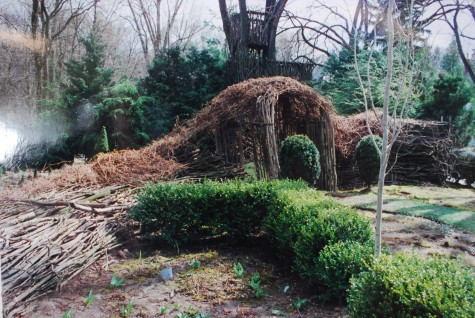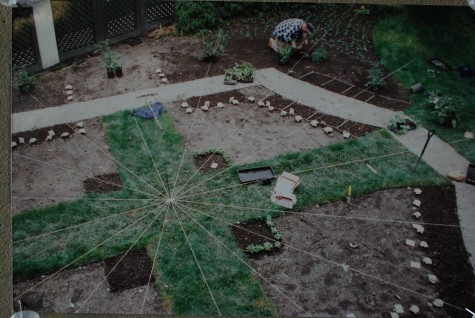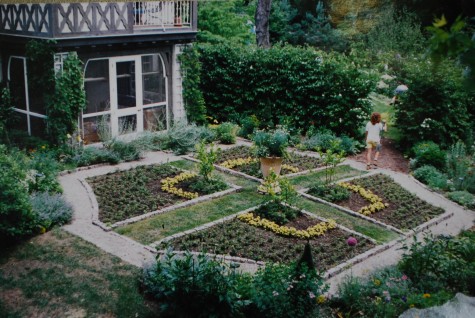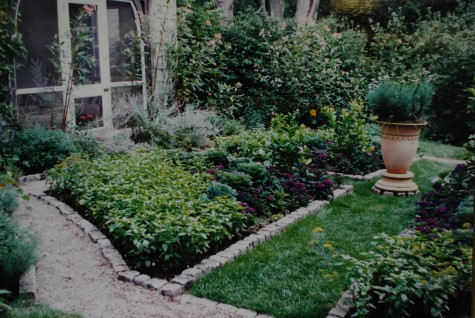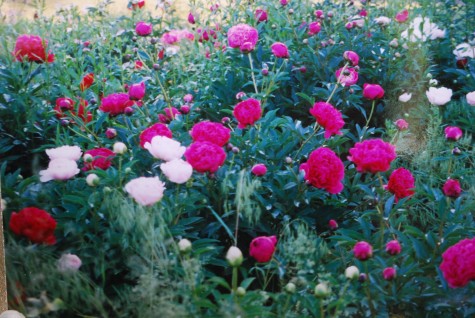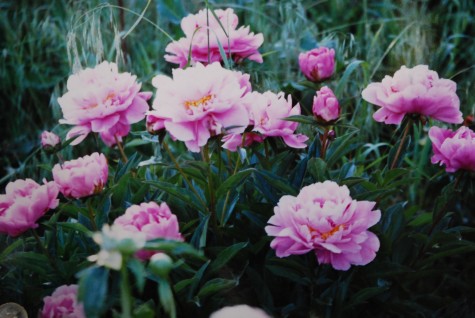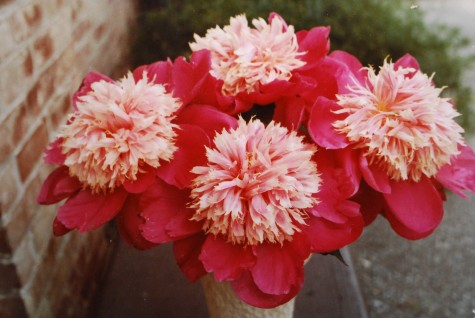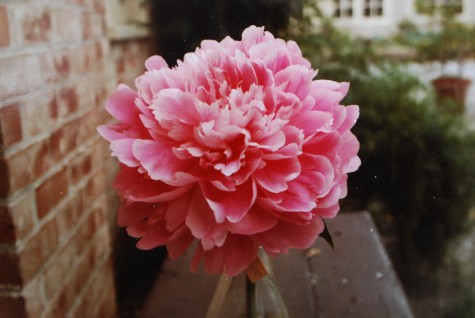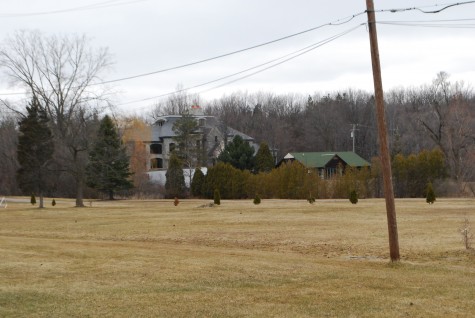 In my heart, I knew better than to do this-but today, I went back anyway. My first garden, and the 5 acres of property that came with it was my home and passion for 15 years. I sold it, and left it, in good order. Even the house was eminently liveable. The people who bought the property-I knew they had plans to build a new house. My offer at the closing to provide photographs of the gardens-they were not interested. My interests are my interests-I have no real need to convince other people to treasure what I do-they do, or they don’t. But I went back today, as I have written posts about my first garden-I thought I would end that series with good news. But as I drove up my street, I had a clear view of my cedar clad ranch, and the building going on behind it-not so swell, this first view. Today’s visit was not my first. I have been back maybe 5 times over the past 15 years. What I saw today was not so much different than I saw 15 years ago. I was expecting a home in place, and a beautiful landscape to go with. Not so. But anyone who gardens has a big dose of hope lodged firmly in their DNA. I am no different.
In my heart, I knew better than to do this-but today, I went back anyway. My first garden, and the 5 acres of property that came with it was my home and passion for 15 years. I sold it, and left it, in good order. Even the house was eminently liveable. The people who bought the property-I knew they had plans to build a new house. My offer at the closing to provide photographs of the gardens-they were not interested. My interests are my interests-I have no real need to convince other people to treasure what I do-they do, or they don’t. But I went back today, as I have written posts about my first garden-I thought I would end that series with good news. But as I drove up my street, I had a clear view of my cedar clad ranch, and the building going on behind it-not so swell, this first view. Today’s visit was not my first. I have been back maybe 5 times over the past 15 years. What I saw today was not so much different than I saw 15 years ago. I was expecting a home in place, and a beautiful landscape to go with. Not so. But anyone who gardens has a big dose of hope lodged firmly in their DNA. I am no different.
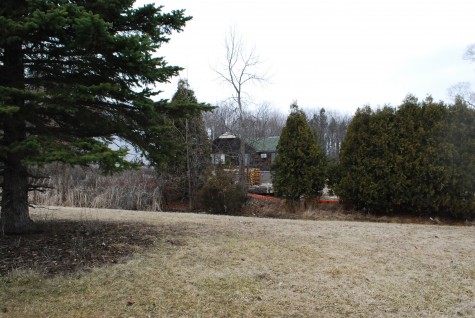 A good bit of the property was covered in dirt piles, piles of concrete, dumpsters, trucks and erosion fencing. This comes with building a new house-but this new house has been under construction for most of the 15 years since I sold it. I see trees struggling to survive, given the years that piles of excavated soil have been heaped over their roots. Like those trees, I am struggling to understand what the big idea is here.
A good bit of the property was covered in dirt piles, piles of concrete, dumpsters, trucks and erosion fencing. This comes with building a new house-but this new house has been under construction for most of the 15 years since I sold it. I see trees struggling to survive, given the years that piles of excavated soil have been heaped over their roots. Like those trees, I am struggling to understand what the big idea is here.
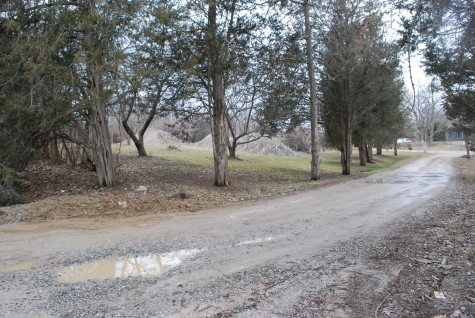 Mountains of excavated soil sit in the orchard meadow. This is not a good look. The ancient junipers that lined the drive-they were never so gorgeous. But they were old, and sculptural-they had green, in the round. They have not been treated kindly. Limbed up and one-sided as they are now, I feel guilty that I ever left their care to someone else.
Mountains of excavated soil sit in the orchard meadow. This is not a good look. The ancient junipers that lined the drive-they were never so gorgeous. But they were old, and sculptural-they had green, in the round. They have not been treated kindly. Limbed up and one-sided as they are now, I feel guilty that I ever left their care to someone else.
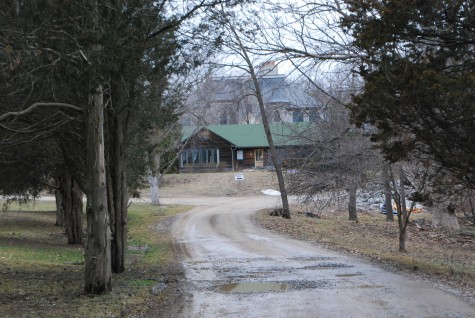
The view down the drive-none of the gardens around the house appear to have survived. My little existing house is dwarfed by a giant, yet unfinished house sitting behind it. My prized peony collection was rooted out and cast off to make way for that house. How this property has been treated-I do not admire what I saw today. The wild garden-maybe it survives, as many of the plants are native. The ancient almost record breaking ash is intact, and dead. I vastly prefer my pictures, and my memories of the time when I happily gardened all over this piece of land. I learned so much, stewarding this big piece of land. What I saw today-I am at a loss to put that into words. The truth of the matter-you really can’t go home.

